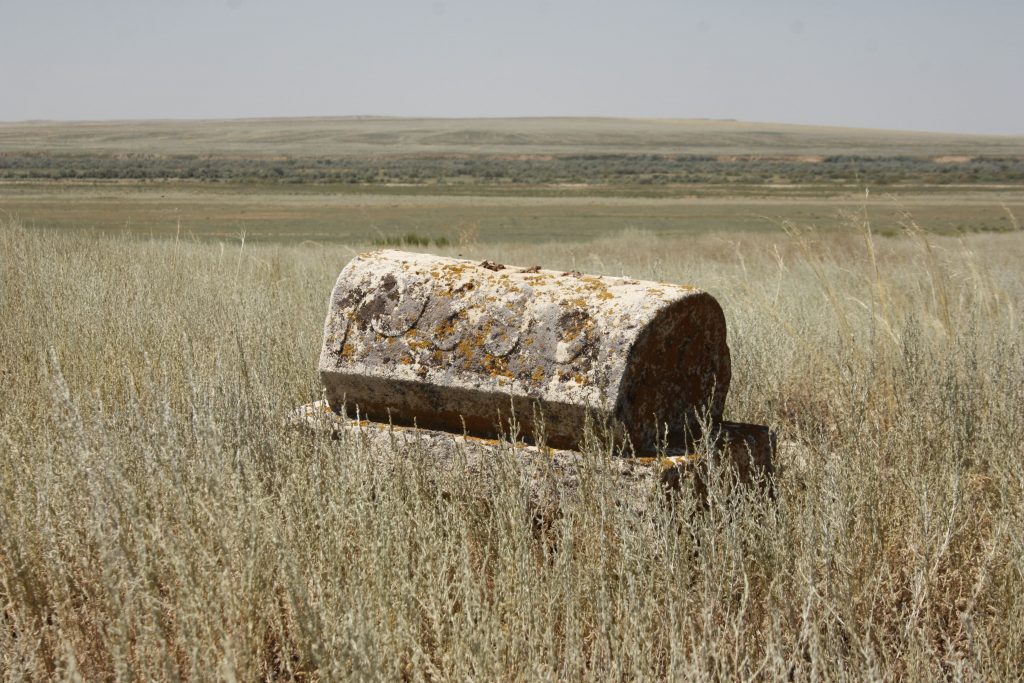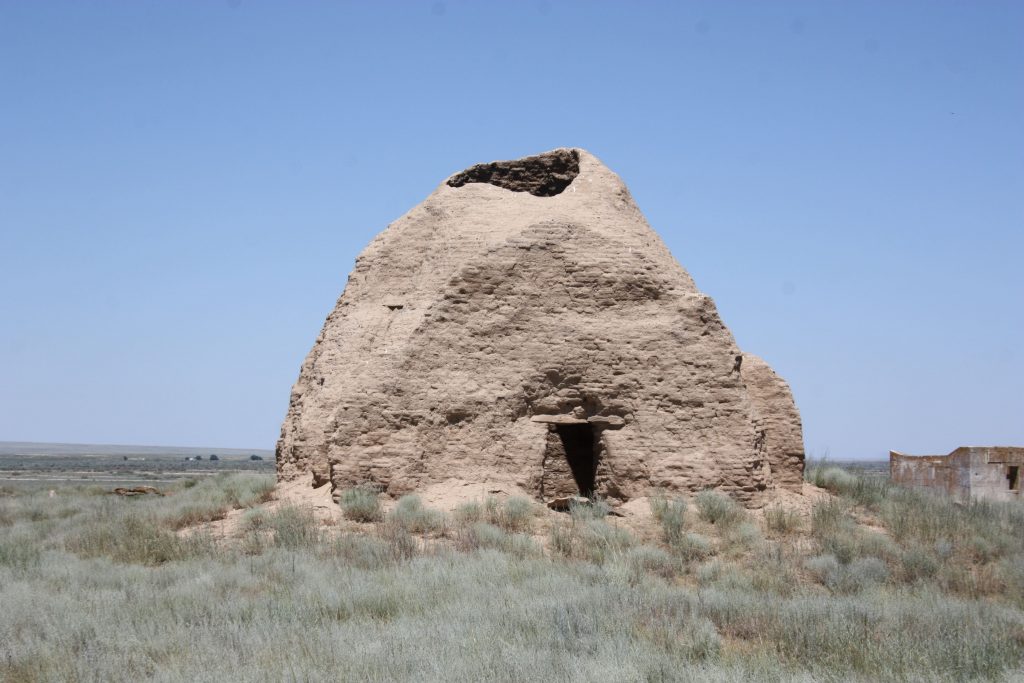Object name and dating: Daumshar necropolis, late XVII-early. XX centuries
Location: Aktobe region, Baiganinsky district, 37 km south-west of the village. Zharkamys.
Description: is a complex of tombstones typical for Western Kazakhstan (more than 200 objects in total).
The earliest (late XVII – early XIX centuries) is the north-western end of the necropolis, where oval-shaped ragged limestone enclosures are concentrated. At the western edge of them, as a rule, there are roughly worked steles with tamga signs. Here is the grave of Daumshar (object No. 200), the eponym of the necropolis.
The most prominent monuments of the complex are three mausoleums of sawn blocks, two of which (objects No. 1, 40) are located in the north-eastern part, and one is the Murza-Murun mausoleum (object No. 175) in the north-western part of the necropolis. It is a rectangular monument with pronounced southern facades (parapet, through opening). The ceiling is designed as a helmet-shaped dome. The mausoleums are characterized by brightly colored ornaments in the interiors.
The raw mausoleums of the necropolis are also oriented with their entrances to the south; in composition, it is a quadrangle (sometimes with a southern facade emphasized in the form of an emerging pestak) with a false-vaulted ceiling planted on it. The chalky limestone mausoleums located in the central part of the necropolis were severely destroyed. Outside them, at the western wall, like at the previous monuments, there are kulpytases.
The saganatams of the complex are varied in types, laid out from sawn-off blocks, the outer surface of which is covered with contour carving with painted ornament.
Small forms of necropolis architecture can be divided into three groups: sandyktases (box and “koitases”), kulpytases with “koitases”, free-standing kulpytases and “koitases”. They are characterized by carved volumetric elaboration of details and flat-relief decor. On the edges of the kulpytases, there are arabographic epitaphs in the Kazakh language, which are accompanied by tamga signs (in the bulk of the tamga of the adai genus).




